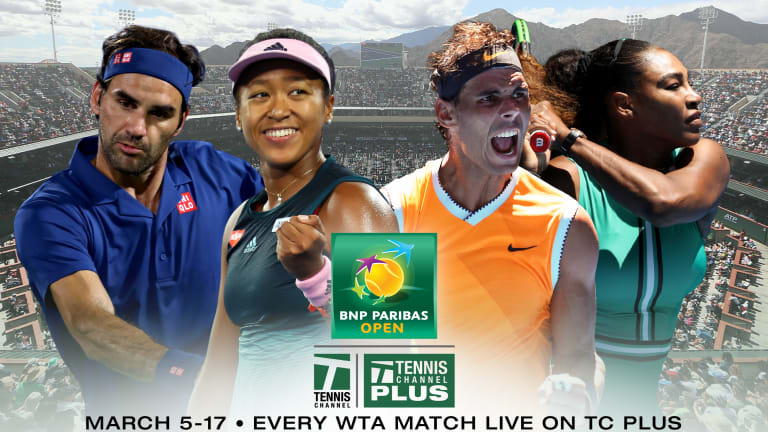Indian Wells, USA
The Kermode kerfuffle: Why tennis’ era of good feelings could be over
card-sponsor-pre Mar 08, 2019Indian Wells, USA
Carlos Alcaraz and Iga Swiatek reset with Indian Wells wins, as rivals endure their own slip-ups
card-sponsor-pre Mar 18, 2024Indian Wells, USA
Carlos Alcaraz defeats Daniil Medvedev to defend his Indian Wells title, Iga Swiatek beats Maria Sakkari for women's title
card-sponsor-pre Mar 17, 2024Indian Wells, USA
Carlos Alcaraz wins second straight Indian Wells title with victory over Medvedev in final
card-sponsor-pre Mar 17, 2024Indian Wells, USA
From the yellow ball to the crystal ball: What's in store for the future of the BNP Paribas Open?
card-sponsor-pre Mar 17, 2024Indian Wells, USA
Iga Swiatek beats Maria Sakkari again in BNP Paribas Open final
card-sponsor-pre Mar 17, 2024Indian Wells, USA
Top 5 Indian Wells Finals, No. 1: Serena Williams d. Steffi Graf, 1999
card-sponsor-pre Mar 17, 2024Indian Wells, USA
2024 BNP Paribas Open men’s final preview: Carlos Alcaraz vs. Daniil Medvedev
card-sponsor-pre Mar 17, 2024Indian Wells, USA
Top 5 Indian Wells Finals, No. 2: Rafael Nadal d. Juan Martin del Potro, 2013
card-sponsor-pre Mar 17, 2024Indian Wells, USA
Who Will Win: Carlos Alcaraz or Daniil Medvedev, 2024 Indian Wells men's final
card-sponsor-pre Mar 17, 2024Indian Wells, USA
The Kermode kerfuffle: Why tennis’ era of good feelings could be over
Historically, player revolts have had a positive effect on tennis. Will that be true of Thursday’s controversial ouster of Chris Kermode?
published_tag Mar 08, 2019
Advertising

The Kermode kerfuffle: Why tennis’ era of good feelings could be over
© 2018 Getty Images
Advertising

The Kermode kerfuffle: Why tennis’ era of good feelings could be over
© Getty Images
Advertising

The Kermode kerfuffle: Why tennis’ era of good feelings could be over
© 2018 Getty Images
Advertising

The Kermode kerfuffle: Why tennis’ era of good feelings could be over